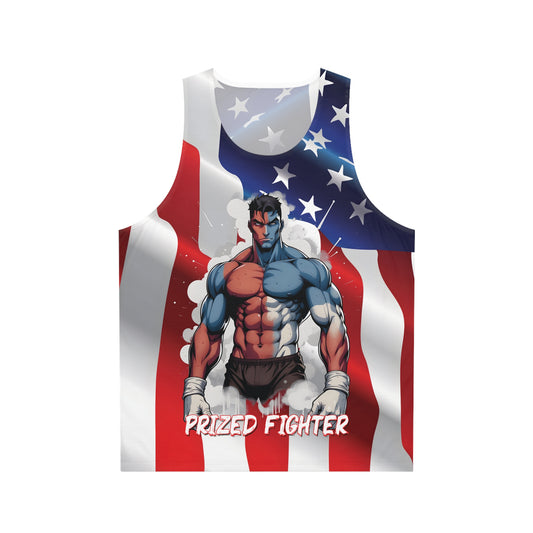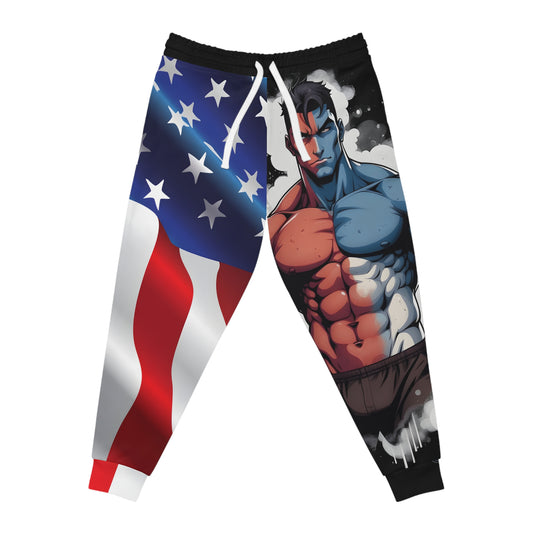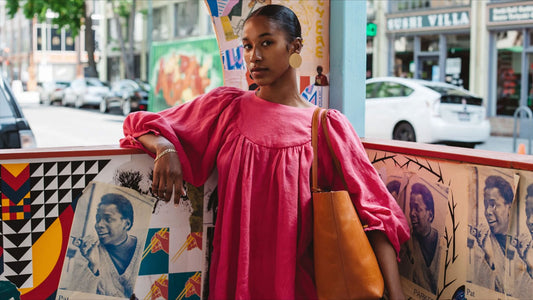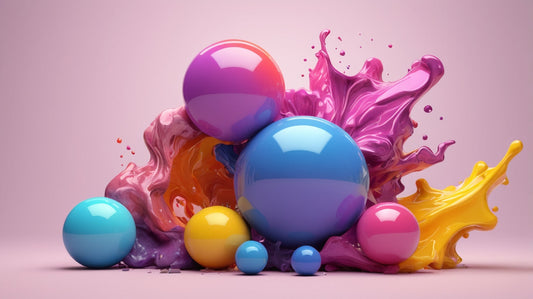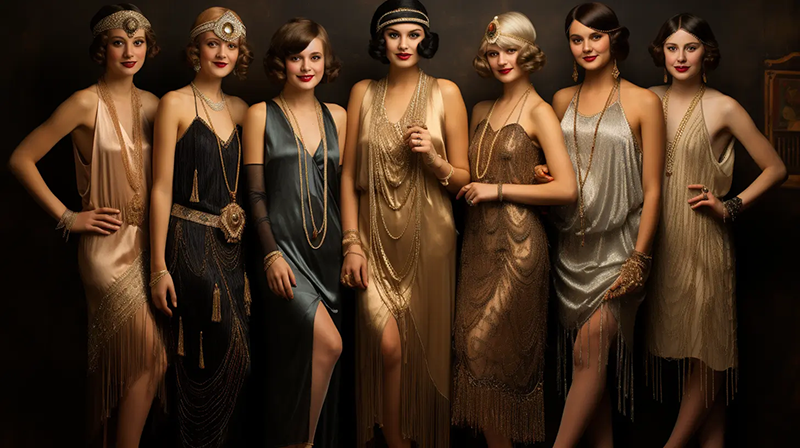
The Roaring Twenties Fashion: A Deep Dive into Fashion
The Roaring Twenties, a term that evokes vivid images of economic prosperity, cultural dynamism, and social upheaval, represents a significant chapter in American history. This decade was characterized by a spirited rebellion against the restrictive norms of the past and the enthusiastic embrace of modernity. From the infectious rhythms of jazz music to the extravagant parties graced by the stylish elite, the Roaring Twenties encapsulated a vibrant zeitgeist. Central to this era was roaring twenties fashion, reflecting the liberation and innovation that defined the spirit of the time. Beneath the surface glamour, the clandestine world of speakeasies served as a counter-narrative, symbolizing the fight against Prohibition. This article explores the multifaceted aspects of the Roaring Twenties, including its fashion, lifestyle, party culture, and the rise of speakeasies while offering a historical perspective on this transformative time.

The Roaring Twenties and its Flamboyant Fashion
Fashion during the Roaring Twenties was revolutionary, marking a departure from the restrictive styles of previous decades. Women began to embrace a newfound sense of freedom, opting for clothing that allowed for greater mobility and self-expression. The quintessential flapper dress, a hallmark of the era, was characterized by its dropped waist, loose fit, and daring knee-length hem. These dresses, made from luxurious materials such as silk and chiffon, were often adorned with sequins, beads, and fringe, allowing wearers to move fluidly on the dance floor. The flapper represented a shift in societal norms; she was often seen smoking, drinking, and dancing in ways that challenged traditional gender roles.
The accessories that accompanied roaring twenties fashion played an equally significant role in defining the aesthetic of the time. Long strands of pearls, feathered headbands, cloche hats, and art deco jewelry became synonymous with the flapper image, while men's fashion embraced boldness with brightly colored suits, patterned ties, and stylish fedoras. The three-piece suit became the standard attire for the modern man, emphasizing a sophisticated yet relaxed look. The tuxedo emerged as a staple for evening events, providing men with the opportunity to showcase their elegance at social gatherings.
The impact of roaring twenties fashion transcended its visual appeal; it served as a reflection of the changing social landscape. Women began to gain independence, entering the workforce in unprecedented numbers and challenging societal norms. The fashion of the time mirrored these shifts, emphasizing individualism and self-expression. The rise of the consumer culture, fueled by advances in manufacturing, also contributed to a desire for stylish clothing, making fashion more accessible than ever before.
The Rise of the Speakeasy Culture
As the 1920s progressed, the United States experienced a dramatic cultural shift with the implementation of Prohibition in 1920. This legislative act, aimed at curbing alcohol consumption, inadvertently led to the rise of underground bars known as speakeasies. Contrary to the law's intention, these establishments flourished and became the social epicenters of the decade, offering patrons a sense of adventure and rebellion.
Speakeasies were carefully hidden, often located in basements or behind unmarked doors in otherwise legitimate businesses, such as soda shops or candy stores. To gain entry into these clandestine venues, patrons often needed to whisper a secret password to a doorman, heightening the thrill of the experience. Once inside, guests were greeted by dim lighting, spirited jazz music, and a vibrant atmosphere that encouraged fun and camaraderie. These venues became synonymous with the Roaring Twenties' nightlife, attracting diverse crowds eager to escape the constraints of prohibition.
The aesthetics of speakeasies were as important as the illicit beverages served. Often adorned with plush velvet seating, lavish chandeliers, and intricate wallpaper, they exuded an air of elegance and sophistication. The music played in these establishments often featured live jazz bands, with musicians improvising and captivating audiences with their talent. The inclusive and lively nature of speakeasies allowed for a unique melting pot of society, where people from different backgrounds interacted and enjoyed the freedom of expression.
Jazz: The Soundtrack of the Roaring Twenties
To understand the lifestyle of the Roaring Twenties, one cannot overlook the profound impact of jazz music. Emerging from African American communities, jazz gained unprecedented popularity across the United States and became the defining sound of the decade. Speakeasies played a pivotal role in the promotion and evolution of jazz music, providing a stage for talented musicians to showcase their skills and creativity.
Jazz was more than just a genre of music; it represented a cultural movement that celebrated spontaneity and improvisation. The energetic rhythms and syncopated beats inspired new dance crazes, including the Charleston, the Black Bottom, and the Shimmy, captivating audiences and encouraging uninhibited movement on the dance floor. Jazz music served as a unifying force that transcended racial and class barriers, bringing people together in a shared experience of joy and revelry.
Renowned figures such as Louis Armstrong, Duke Ellington, and Bessie Smith became household names, leaving an indelible mark on the musical landscape. Their contributions to the genre not only showcased their immense talent but also played a crucial role in promoting African American culture and artistry in a predominantly white society. Jazz clubs and speakeasies provided a platform for these musicians, allowing for creative collaboration and the emergence of new styles that shaped the future of music.
Party Culture: Lavish Gatherings and Socialite Events
The parties of the Roaring Twenties were grand spectacles that embodied the spirit of extravagance and hedonism. With the economic prosperity of the decade, affluent individuals and socialites hosted lavish soirées that became legendary for their opulence and scale. The guest lists often read like a who's who of the time, creating events that were not only memorable but also instrumental in shaping social dynamics.
These extravagant gatherings were characterized by extravagant décor, gourmet cuisine, and flowing champagne. Hosts often went to great lengths to impress their guests, employing renowned chefs and musicians to elevate the experience. The exuberance of the parties mirrored the societal shifts of the time; they represented a break from tradition and a celebration of freedom.
One notable aspect of party culture during the Roaring Twenties was the emergence of the "cocktail party." With the prohibition of alcohol, hosts would concoct creative mixed drinks using available ingredients, often resulting in innovative concoctions. The cocktail party became a stylish affair, where guests could socialize and enjoy drinks in a relaxed yet sophisticated environment. It was during these gatherings that the art of mixology began to flourish, laying the groundwork for the modern cocktail culture we know today.
The Influence of the Roaring Twenties on Modern Society
The legacy of the Roaring Twenties continues to exert influence on contemporary culture and lifestyle. While the decade itself culminated in the Wall Street Crash of 1929 and the onset of the Great Depression, its spirit lives on in various forms. The Roaring Twenties represents a time when tradition was challenged, and the foundations of modern society began to take shape.
Throughout the years, the aesthetic of roaring twenties fashion has inspired designers and fashion enthusiasts alike. Elements of flapper style, art deco motifs, and bold color palettes periodically resurface in fashion shows, parties, and themed events. The appeal of the Roaring Twenties endures, as people often yearn to channel the glamour and creativity that defined the era.
Moreover, the social movements that gained traction during this transformative period laid the groundwork for future advancements in equality and justice. The fight for women's suffrage and civil rights gained momentum in the Roaring Twenties, challenging the status quo and advocating for greater representation and autonomy. The lessons learned from this era have continued to resonate, reminding us of the importance of progress, inclusivity, and the ongoing struggle for social justice.
Romanticizing the Roaring Twenties in Popular Culture
The Roaring Twenties has not only become a subject of historical interest but has also permeated popular culture through various forms of media. From film to literature, the decade is often romanticized as a time of glamour, adventure, and rebellion. Notable works such as F. Scott Fitzgerald's "The Great Gatsby" capture the essence of the era, exploring themes of wealth, love, and the pursuit of happiness amidst the backdrop of decadence.
Film adaptations of these literary works, along with other portrayals of the Roaring Twenties, have contributed to the public's fascination with the era. Movies often depict lavish parties, fashionable attire, and the allure of speakeasies, encapsulating the spirit of the time in a glamorous light. These portrayals inspire contemporary audiences to explore the aesthetics and cultural influences of the Roaring Twenties, leading to a resurgence in themed events and parties celebrating the era.
Conclusion: The Enduring Legacy of the Roaring Twenties
The Roaring Twenties stands as a vibrant testament to the power of cultural change and social progression. The distinctive fashion, party culture, and the clandestine world of speakeasies highlight a time when societal norms were challenged and redefined. Reflecting on this dynamic decade, we celebrate not only the glamour and style that captivated the public but also the courage and resilience of those who dared to break free from conventional constraints.
As we continue to draw inspiration from roaring twenties fashion and lifestyle, we honor the spirit of liberation, creativity, and connection that defined the Roaring Twenties. This era reminds us of the importance of daring to dream, embrace change, and foster inclusive communities where the richness of cultural diversity can thrive. In a modern world that often seems divided, the lessons and inspirations drawn from the Roaring Twenties serve as a powerful reminder of the joy and vibrancy that can be found in unity, self-expression, and the celebration of life.








